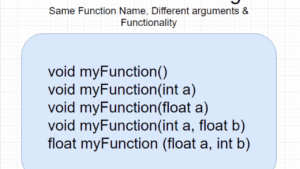Originally posted on February 3, 2022 @ 11:33 pm
The discussion over traditional and modern day learning grows in every mind. And the aspect of digital technology has made it even more heated. The reason is that people are opting for digital technology in every phase of life. Students are opting for digital technology when it comes to learning different concepts. The instructors are also opting for digital technology to deliver effective learning. But the question is, what has changed learning from traditional to a modern version? Let’s have a look at the pros and cons of traditional and modern learning. This article by top coursework helpers will conclude what has changed over the years, and what’s common now.
What is Modern Day Learning?
Modern learning is “Online or Distance” learning. This learning takes place via technology from a distance. It relies on technology such as the internet for both delivering, and grasping learning. This type favours independent learning. The learner needs to be “self-motivated, and directed” to get the most out of this learning method. It does not need any set-up as compared to the domain of traditional learning. The learner can access learning at any time, and from any place. The tools of modern day learning include video lectures, and discussion boards. Further, laptops, smartphones, and tablets are the gadgets needed to ensure modern learning aspects.
What Are the Pros of Modern Day Learning?
Student-Centred
Modern learning addresses specific needs of the learners. It focuses on the areas where the student needs improvement. This provides the students with deep knowledge of the contents through addressing of the improvement based areas. Hence, modern learning is considered a highly student-centred approach.
Increasing Efficiencies
Online learning offers instructors a variety of ways to deliver learning. The tools used within this context include videos, podcasts, and PDFs as well. These tools bring efficiencies in terms of delivering, and grasping the concept of learning. Hence, latest learning is increasing efficiencies through a varied approach for learning.
Reducing Subjective Assessment Burden
Online learning prefers objective assessment. In objective assessments, learners have to answer 20 multiple-choice questions. This objective assessment approach involves less time for the instructor, and learner. The subjective assessment in traditional learning is burdensome, and time-taking as well. Hence, modern-day learning reduces the subjective assessment burden.
Maximising Learning time
Modern-day learning saves time through the ease of learning within convenience. Learners can get benefits by learning from anywhere, and at any time. There is no travelling expense, or cost of learning involved. The low financial burden also provides high time for learning. In short, modern-day learning maximises the learning of students to a great extent.
Flexibility
Modern-day learning provides flexibility as the learner can learn by just sitting at home. There is no need to travel to the institute to ensure this aspect. The instructor also gets flexibility in delivering lectures at an individually curated pace. Hence, modern-day learning provides convenience, and flexibility to both instructors, and learners.
Improving Learner and Instructor Interaction
Learners and instructors can interact with each other through the internet. In this context, social media platforms such as WhatsApp and Facebook provide a greater source of interaction. Also, email is useful in interacting with instructors to ensure online learning. Hence, latest learning is improving learner-instructor interaction as well.
What are the Cons of Modern Day Learning?
Safety of the Child
Safety of the child is a major challenge in modern day learning. Students are soft targets for Cyber-crimes and Cyber-bullying in the aspect of online learning. This shows that latest learning also has some areas of lacking that need to be overcome, since this is an evident threat to its success.
Lack of Social interaction
Modern learning lacks social interaction. The learner cannot interact with other learners as he/she could in the domain of traditional learning. This shows that modern day learning prohibits the social interaction, and development of a learner by decreasing social exchanges that are made in-person.
Lack of Supervision
Instructors do not supervise their learners over online learning. Moreover, parents also fail to supervise their children via online learning most of the time. Students have the freedom to do what they desire. This disadvantage of modern day learning evidently provides students a window through which they can engage in activities which should be avoided.
Distraction
Modern learning is more prone to unwanted content over the internet. This is because learners have ease in access to undesirable content. This undesirable content distracts their attention from learning.
What is Traditional Learning?
Traditional learning is a typical face-to-face type of interactive learning. It takes place only in a physical location such as in a school, or campus. There is an instructor who moderates, and regulates the flow of information. The instructor delivers learning and knowledge in a routine manner. This routine manner comprises of written exercises that are completed in the class, or at home. The learner derives key learning from the instructors. Other resources also contribute to learning of the students. Further, they include books, board, audio, journals, and video. This involves monotonous learning as well, which is in fact, lecture-based learning.
What Are the Pros of Traditional Learning?
- Learners can ask questions on their queries at any time of the learning.
- The feedback is gained instantly.
- The interaction between students and instructors is high in this learning approach.
- The student can build social networks through this learning type.
- They can experience school, and university activities in-person.
- Students can have physical degrees, and better career opportunities.
- They can have practical knowledge in the field, and in laboratories.
- There is a greater engagement of the learner in this learning approach.
- It involves real-time learning.
- The student gets motivation with respect to learning in a social environment.
- It creates good routines for both students, and the instructors.
What Are the Cons of Traditional Learning?
- Students and instructors have no flexibility.
- It demands high student costs such as fee, travel, or accommodation expenses.
- Instructors have to set regular schedules for delivering lectures.
- Students have to become regular to ensure effective learning.
What Has Changed in Learning?
From traditional to modern day learning, the introduction of flexibility is a new pace. Flexibility is high in the domain of modern learning. And this is not available in traditional learning. Learners can learn at any time of the day through video recordings. The instructors can also deliver learning with convenience. It involves less cost, and time for both the learners and instructors. Further, latest learning is bad for those who lag in terms of meeting deadlines. Also, it lacks social interaction as well. In short, modern day learning is not good for procrastinators. This is because it does not develop social interaction within the learners.




